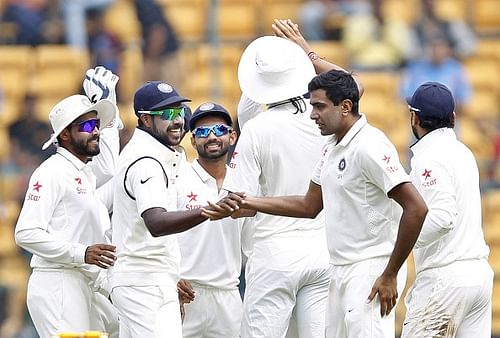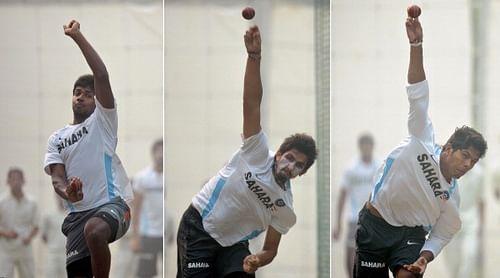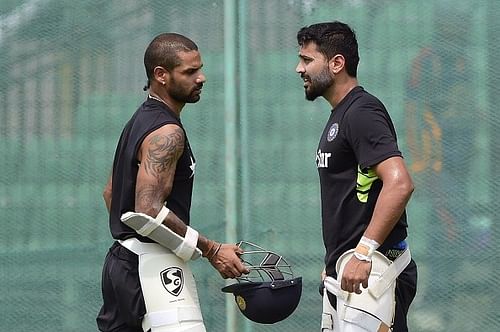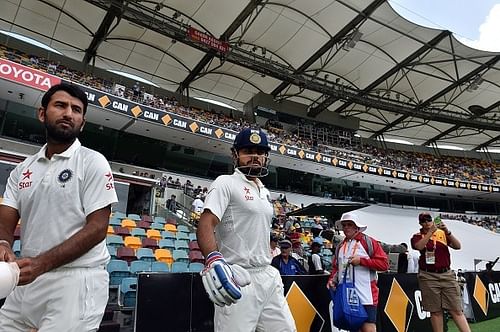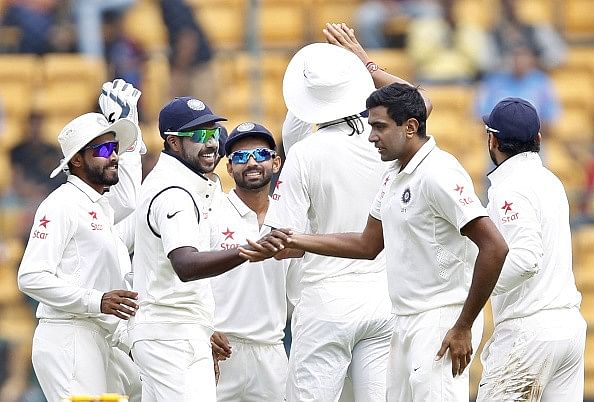
What India must do to be No. 1 in Test cricket
It was a welcome change from coloured kits and white balls to the grind of five-day cricket, as the recently concluded India-South Africa series got underway. White flannelled figures on green grass, all battling to make the red cherry dance to their tunes, just re-defines the highest level of the gentleman’s game.
There has been a lot of talk about the pitches at Nagpur and Mohali – even the Delhi track wasn’t spared – but it was the home team that finally triumphed over a side that hardly looked like the top-ranked Test team in the world except for brief periods. As a result, India gained the necessary points needed to move into second place in the listings.
Could this be called a creditable achievement? Certainly. It has come against a team that boasted of the likes of Hashim Amla, AB de Villiers, Faf du Plessis, Dale Steyn, Morne Morkel, and the wily Imran Tahir. India definitely had the home advantage – the tracks did display a considerable amount of turn – and utilized it to the fullest.
It also came against the backdrop of crushing defeats at the hands of the Proteas in the limited overs leg of the whole tour. Considering all these aspects, the 3-0 victory is definitely something to be cherished.
However, there is always the urge to be at the top. It is human tendency, and is applicable in all areas of life. Legions of die-hard fans of the Men in Blue want their team to reach the summit of the Test rankings again, as they did under MS Dhoni’s leadership in 2009.
That side still had the remaining members of the famed Fab Four of Indian cricket. The current squad, led by Virat Kohli, is relatively new to the Test arena, and for it to reach the giddy heights of six years ago, there is a lot of work to be done. There is still some lack of clarity in the roles that the team management has mapped out for each member, and this needs to be sorted out in time.
The following areas should be a good reference point for them:
Build a Core Team For All Match Situations and Conditions
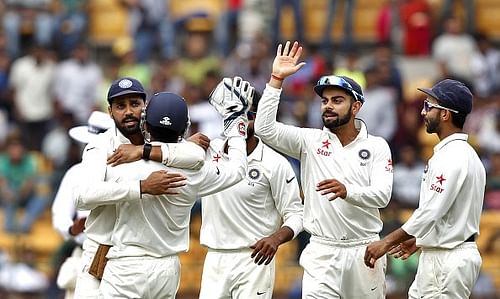
Steve Waugh helmed an Australian side that won sixteen consecutive Test matches between 1999 and 2001. He may not have performed all that well during that period, but had the luxury of leading a powerful set of cricketers who raised their game to newer levels.
The likes of Shane Warne, Glenn McGrath, Justin Langer, Matthew Hayden, Adam Gilchrist – all of them formed the crux of a unit which rose to dominate the game for much of the early decade of the 21st century, across multiple conditions (both game and pitch specific) and in different countries. It did not happen overnight, though; it required a considerable amount of time for them to rise to the top.
It is the same case with the current Indian setup. While skipper Kohli hasn’t exactly set the stage on fire with the bat, the remainder of the squad needs to be able to rally around him, giving him the support he needs in extremely crucial situations. From the batting department, Ajinkya Rahane has been a standout performer in the recently-concluded series.
The trio of Ravichandran Ashwin, Amit Mishra and Ravindra Jadeja has been a revelation, with the Chennai off-spinner leading the pack admirably, while Ishant Sharma and Umesh Yadav have performed well within their limits. Cheteshwar Pujara, despite displaying a prodigious proclivity for getting bowled, has been quite solid in his outings.The two openers have blown hot and cold at times.
The Rohit Sharma conundrum, however, is of such a complex nature that one wonders if Kohli will actually be able to build a cohesive unit in order to help his side become numero uno. If a harsh decision needs to be taken, then for the greater good, it must be done. Because for a team to surge to the top, its members need to be fully functional and perform consistently.
The basics absolutely have to be in place, so if Sharma has to be confined to the dust bowls of the domestic arena or the windy, overcast foregrounds of English county cricket in order to iron out the chinks in his game, it may not be such a bad idea.
I’d choose a team composed of specialists as my playing eleven. For any Test match played at home or away, in different environments, I will always look to have five or six core members who must perform consistently – the openers, the middle order specialists (including the captain and the wicket keeper), and strike bowlers. That, in my opinion, is the central unit India needs.
Nurture the Bowlers – Pace and Spin Work Best In Tandem
Cricketing history shows us that bowlers always hunt in pairs. Dennis Lillee and Jeff Thomson did the job for Australia during much of the seventies and early eighties, while the fearsome West Indian pace quartet destroyed the reputations (and careers in some cases) of batsmen worldwide. Closer home, the golden spin force of India – Venkatraghavan, Prasanna, Bedi and Chandrasekhar – caused plenty of problems for willow wielders too. There have also been many instances of individual heroics with the ball, but there was always good backup available to keep things tight at one end.
The South Africa series has brought into focus India’s growing stocks in the pace and spin departments. I cannot remember the last time they fired in unison in Test matches – at least not since the retirements of Javagal Srinath, Anil Kumble, and Zaheer Khan, for instance. With injuries affecting the current crop of quicker bowlers like the plague, it is imperative that their fitness levels are monitored and kept at high levels.
Off-season training isn’t a bad option either – time spent playing in England, Australia or South Africa could actually prove to be beneficial for the likes of Ishant Sharma, Umesh Yadav and Varun Aaron, in the long run.
Mohammad Shami’s return from a layoff is a shot in the arm for Shastri & Co., but keeping this bunch of pacers injury-free and developing bench strength for the long term will actually work wonders for India’s quest to be No. 1. Maintaining control over line, length and accuracy while generating serious speed, on a consistent basis, is tough, but it can be done. And of course, there will always need to be reliable replacements in place just in case any of the bowlers fall prey to injury or illness.
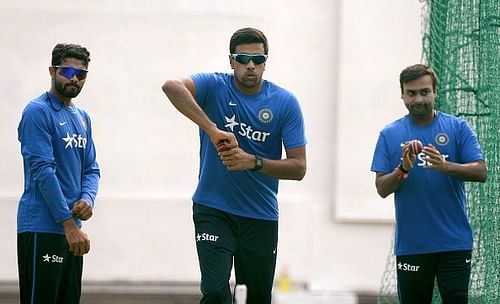
Having three spinners in the playing XI, forming a 6-5 combination, becomes more of a luxury than an essential requirement outside the subcontinent. Nevertheless, the masters of tweak have long plied their varied arts at all venues and in very difficult conditions. Ashwin, who is fast becoming the leader of this merry band, has begun to hit his straps in the role of main strike bowler.
On turning tracks, he is as lethal as the Black Mamba; however, the livelier, pace-friendly pitches have often led to him trying out too many things when looking for wickets, leading to a dip in what would ideally be consistent results. He would do well to stick to basics and not experiment too much.
It is here that Mishra and Jadeja need to lend the support that the Chennai lad would require immensely. The logic is simple – it is still difficult for batsmen around the world, save a few, to play leg spin and left-arm spin confidently. In that sense, it would be prudent to have either of them as Ashwin’s partner, or become a new spin combination in case the off-spinner isn’t available.
An added incentive is their abilities with the bat – Jadeja a tad more skilful than Mishra – so the longer they are consistent together with Ashwin, the easier it will be for India to win games abroad too. Pace and spin in perfect tandem spells a meteoric rise in rankings!
Onus on Building Partnerships
This is one area that India must really work on if they are to entertain any hopes of regaining the top spot. The current opening pair of Shikhar Dhawan and Murali Vijay hasn’t exactly done too much with the bat in recent times, although the latter has been able to show signs of consistency in his scoring. In the long run, it could hurt the side in their quest to build potentially large scores.
Opening partnerships such as Langer-Hayden, Greenidge-Haynes, or even Sehwag-Gambhir, have managed to do well even in tough situations simply because they have played to their respective strengths: one to score briskly, the other to hold one end up and keep the scorecard ticking. Dhawan’s case is a little strange – he either tries to play too many shots early in his innings, or goes into a shell.
Vijay, on the other hand, is slowly coming into his own, although his shot selection can be baffling at times. India need both these men to give the side a rocksolid foundation at the top, from which the rest of the team can contribute to a matchwinning total. For that, Dhawan needs to play each ball on merit and then go on the offensive once settled.
Cheteshwar Pujara and Ajinkya Rahane, along with Kohli, are the mainstays in the current line up. Building partnerships comes easily to them, yet they haven’t managed to do so on a regular basis. There is still no certainty about their positions in the batting order.
Pujara, in particular, seems to be a shell of his former self – perhaps the early comparisons with the legendary Rahul Dravid have taken their toll on his game. All he needs is a bit of time in the middle and an adjustment to his technique and footwork.
Rahane, meanwhile, keeps going from strength to strength. He is the likely candidate to shoulder the middle-order responsibility well, taking the weight off his captain’s shoulders. He can both graft and attack, and can also shepherd the tail well. Like Tendulkar, Laxman, Dravid and Ganguly, the troika of Pujara, Kohli and Rahane hold the key to India’s fortunes and will do well to provide the long partnerships that characterized their predecessors.
With Rohit not in his groove, it is up to these guys to take charge and control the game from the Indian perspective.
The Leadership Perspective: Strategize, Execute, and Innovate
Captaincy does not come easy. Re-building a former champion side from scratch isn’t easy. The onerous task of doing both has fallen on the shoulders of Virat Kohli, and it is a position few would want to be in. With former Indian all-rounder Ravi Shastri entrenched as the Team Director/Coach, the skipper needs to work out a long term strategy in order to get his side to the pinnacle of the Test rankings.
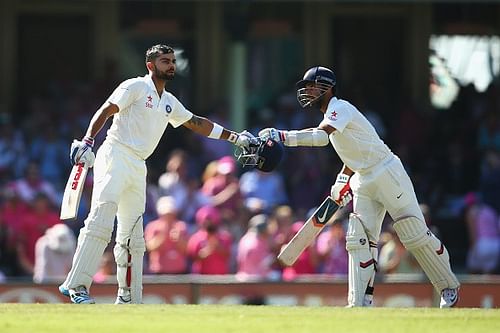
Both individuals are highly optimistic and have expounded upon the need to play fearless cricket. Now, this philosophy may work well in the short-term. However, if the goal is to ensure the No. 1 ranking, the thinking needs to incorporate both a renewal of basics, the need for adequate bench strength, and some creative approaches. .
First, there must be a flexible strategy in place for overseas and subcontinent tours. Emphasize more on the bench strength, try out a few youngsters in practice games, and once the full squad is chosen, nurture them. Identifying specialists for each role is an important part of this approach – the Horses for Courses policy works well in short bursts.
There also needs to be an unorthodox element to the final plan, such as having two left handers open the innings, or have a leg spinner start proceedings when bowling. Such steps can actually prove to be extremely beneficial for the team’s fortunes. And of course, Kohli would need to guard his side against complacency when chasing relatively smaller targets for victory (India’s debacle at Barbados in 1997 is a stark reminder of such complacency).
Whatever way they decide, it is no secret that in order to be No. 1, Team India needs to give serious thought to the way it approaches the Test format. Only four points separate them from the table toppers, meaning that they would have to form a winning habit soon. Game On!
